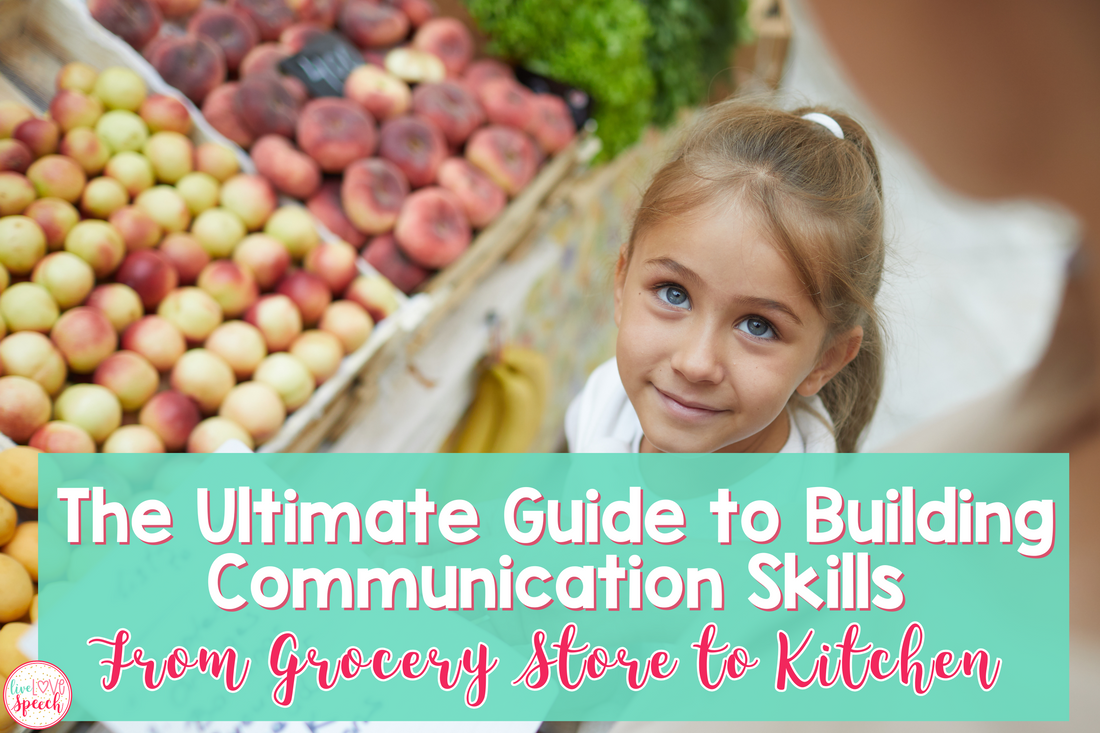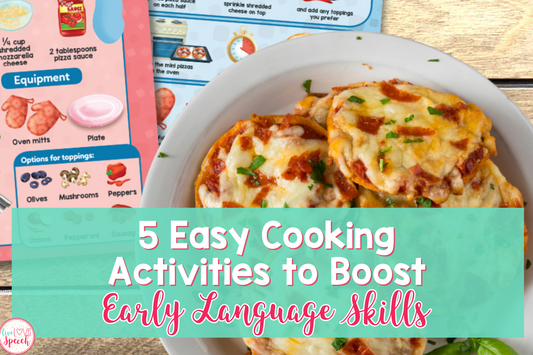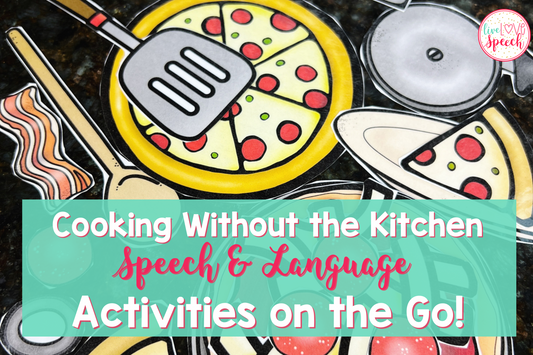 I’ll be honest... I used to think grocery shopping and meal prep were just chores to check off my list. Grab the food, toss it in the cart, unload the bags, and move on with the day. But over the years, I’ve realized something important: these “small” routines are packed with opportunities for connection and learning.
I’ll be honest... I used to think grocery shopping and meal prep were just chores to check off my list. Grab the food, toss it in the cart, unload the bags, and move on with the day. But over the years, I’ve realized something important: these “small” routines are packed with opportunities for connection and learning.
Some of my favorite moments of building communication skills have happened in the grocery store aisle or while unpacking groceries at home.
Kids are curious, they want to help, and they soak up so much language when we slow down and bring them into the process.
So let’s walk through how you can use each step, from aisle to table, to make communication skills part of everyday life.
Building Communication Skills in Real Time

The grocery store is like one big language lab. Instead of rushing through with a list, slow down and turn it into practice.
-
Labeling and Vocabulary: Point out items and encourage kids to name them. “What’s this?” (apple). “What color is it?” (red).
-
Category Practice: Ask where things belong. “Which aisle do we find cereal in?” or “Does cheese go with fruits or dairy?”
-
Decision-Making: Offer simple choices. “Do you want apples or bananas?”
-
Sequencing: Talk through steps. “First, we pick the pasta. Then we buy it. Later, we cook it.”
Every aisle becomes an opportunity to practice new words, expand sentences, and make kids feel included.
Unpacking Groceries: Sorting and Describing for Language Growth
Once you’re home, the learning doesn’t stop. Putting groceries away is another great moment for building communication skills.
-
Sorting: Kids can help divide food into categories: fridge, freezer, pantry.
-
Describing: Use adjectives and sensory words. “This milk is cold.” “The bread is soft.”
-
Predicting: Ask questions like, “What do you think we’ll use these tomatoes for?”
It turns what could be a boring task into an interactive one. Plus, kids love having a “job” to do.
Want something that makes this even easier? My Grab-n-Go Cooking Pack has ready-to-use visuals, sorting activities, and step-by-step guides that are perfect for sessions or home practice.

In the Kitchen: Building Communication Skills While Cooking
Now comes the fun part... cooking! Even simple recipes give you endless opportunities to model language and support independence.
-
Following Directions: Give simple verbal or visual instructions. “Wash the apple.” “Put the spoon in the bowl.”
-
Expanding Utterances: Model longer sentences and encourage kids to copy or build their own. For example: “The apples go on the counter because they are a fruit.”
Want even more ideas for encouraging communication during kitchen time? Check out my blog on 12 Ways to Encourage Language Development in the Kitchen for practical tips you can use right away.
-
Descriptive Language: Talk about textures, colors, smells, and tastes as you go.
Cooking doesn’t just build language. It builds life skills, confidence, and a sense of accomplishment.
A Personal Example
In the past, I had Landon help me make a berry yogurt parfait. He layered yogurt, granola, and blueberries. Did he make a mess? Absolutely. But while he worked, we practiced:
-
Naming (“blueberries,” “yogurt”)
-
Describing (“sticky granola,” “cold yogurt”)
-
Sequencing (“first yogurt, then granola, then berries”)
It wasn’t about the parfait. It was about communication. And the smile on his face when he got to eat “his” creation made it all worth it. We always just whip out a visual recipe and get to work!
Why Everyday Routines Work
So often, we think language practice has to be structured or formal. The truth is, everyday routines are the perfect place to build confidence because:
-
Kids feel comfortable in familiar settings.
-
The words and actions are meaningful and connected to real life.
-
It doesn’t require extra prep or fancy materials.
By weaving in communication practice at the store, while unpacking, and in the kitchen, kids get multiple opportunities to learn the same concepts in different ways. That repetition is gold.
Keep It Simple, Keep It Consistent
You don’t need a full kitchen lesson or a big grocery trip every time. Start small. Pick one part of your routine, maybe unpacking the fridge, and add in a little more language practice.
Remember: progress isn’t about perfection. It’s about connection.
Building communication skills doesn’t have to feel like one more task on your to-do list. It can happen naturally in the things you’re already doing.
So next time you’re at the grocery store or making dinner, take a breath, slow down, and invite your kids into the process.
Because of the small steps, the “apples or bananas?” and “first we wash, then we cut” are where the big growth happens.
If you’re just getting started with little learners, my post on First Steps in the Kitchen: Cooking Skills for Ages 3–5 is the perfect place to begin.
SAVE THIS POST
Don't forget to save this post on your favorite Pinterest board so you'll be all set when it comes time to planning your next cooking activity.






